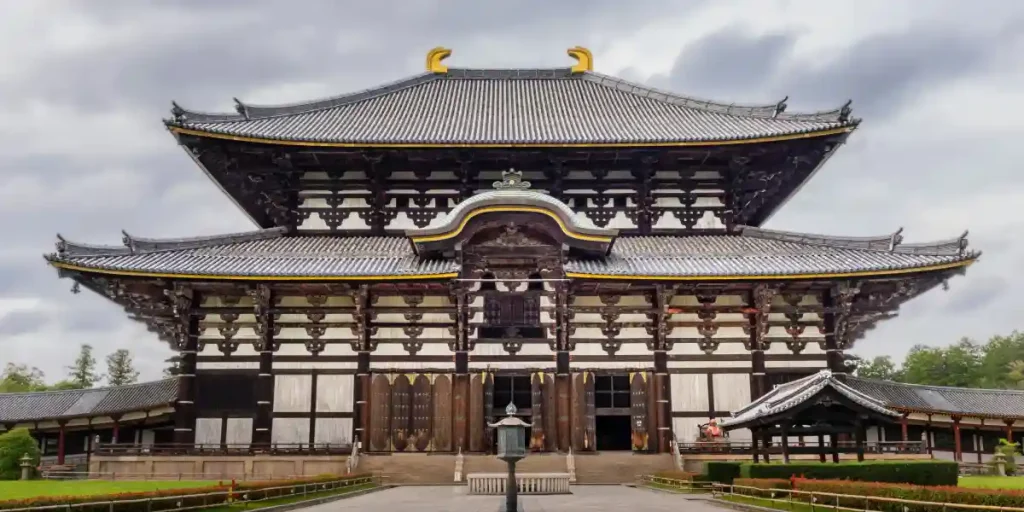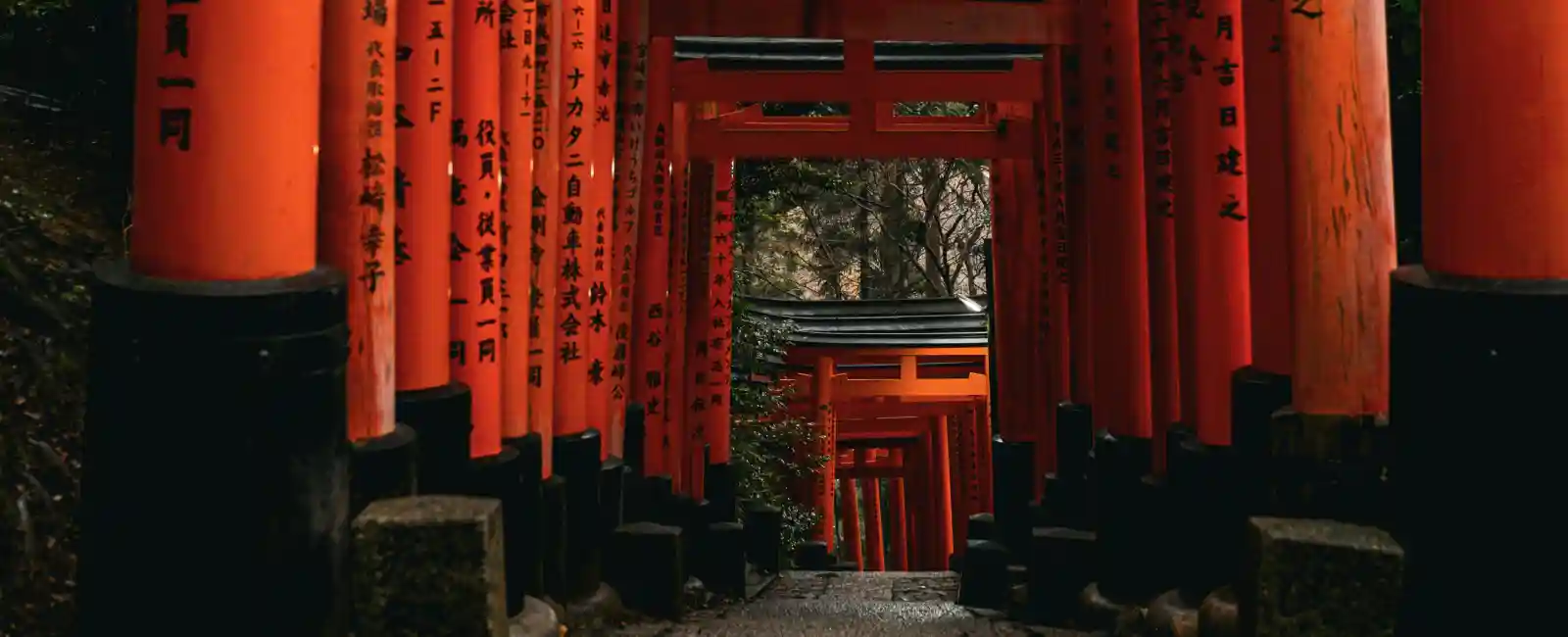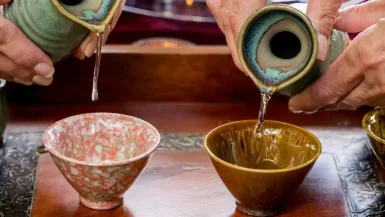Japanese ancient temples and shrines are not merely places of worship but are also repositories of art, architecture, and tradition that have been preserved for centuries. These sacred spaces offer a window into Japan’s past, revealing the profound influence of both Buddhism and Shintoism on the nation’s development. As you wander through these hallowed grounds, the serene ambiance and intricate details invite contemplation and reverence. From the towering pagodas to the delicate stone lanterns, each element of these sites is steeped in symbolism and meaning. Moreover, for those who wish to connect with the spiritual essence of Japan, visiting these temples and shrines provides an experience of tranquility and enlightenment.
1. Kyoto’s Kiyomizu-dera: A Testament to Pure Water and Faith
Kiyomizu-dera, located in Kyoto, stands as one of Japan’s most celebrated ancient temples. The tepmle was founded in 780 AD. It has been associated with the purity of water, from which it derives its name. The temple’s most famous feature is its wooden stage. The stage juts out from the main hall, offering breathtaking views of the cherry and maple trees below, as well as the city of Kyoto in the distance.
Visitors flock to Kiyomizu-dera not only for its stunning architecture but also for its spiritual significance. The temple enshrines Kannon, the goddess of mercy, and has been a pilgrimage site for centuries. The Otowa Waterfall is located at the base of the main hall. It is believed to grant wishes and good health to those who drink from its streams. As you walk through the temple grounds, the ancient wooden structures and the serene atmosphere transport you back in time.
Kiyomizu-dera’s enduring appeal lies in its harmonious blend of natural beauty and spiritual depth. The temple’s location on the slopes of Mount Otowa enhances its ethereal presence, especially during the cherry blossom season in spring and the vibrant autumn foliage.
2. Ise Grand Shrine: The Soul of Japan’s Shinto Beliefs
Ise Grand Shrine, or Ise Jingu, holds the distinction of being the most sacred Shinto shrine in Japan. Situated in Mie Prefecture, this expansive complex honors Amaterasu, the sun goddess and the mythical ancestor of the Japanese imperial family. In contrast to many other ancient temples and shrines in Japan, Ise Jingu undergoes rebuilding every 20 years as part of the Shikinen Sengu ritual, a tradition maintained for over 1,300 years.
The Ise Grand Shrine consists of two main shrines: the Inner Shrine (Naiku) and the Outer Shrine (Geku), each surrounded by dense forests and flowing rivers that add to the shrine’s mystical ambiance. Visitors approach the Inner Shrine through a series of torii gates and gravel pathways, which symbolize the purification process before reaching the sacred heart of the shrine. The simplicity and elegance of the shrine’s architecture reflect the Shinto belief in the sacredness of nature and the impermanence of all things.
As you explore Ise Jingu, the serene environment encourages quiet reflection and a deeper connection with the spiritual world. Moreover, the shrine’s natural surroundings, combined with its historical and religious significance, make it a unique destination among Japan’s ancient temples and shrines. For those interested in experiencing the essence of Shintoism, a visit to Ise Grand Shrine offers an unparalleled opportunity to immerse oneself in Japan’s ancient spiritual traditions.

3. Nara’s Todai-ji: Home to the Great Buddha and Ancient Wisdom
Todai-ji, located in Nara, is one of Japan’s most iconic ancient temples and a UNESCO World Heritage site. Moreover, established in 752 AD, this temple is renowned for housing the world’s largest bronze statue of Buddha. It is famous as the Daibutsu. The statue, which stands at 15 meters tall, represents Vairocana Buddha and serves as a powerful symbol of peace and enlightenment.
The sheer scale of Todai-ji is awe-inspiring, and its Great Buddha Hall (Daibutsuden) ranks as one of the largest wooden structures in the world. As you approach the temple, the imposing Nandaimon (Great South Gate) immediately greets you, flanked by two fierce-looking guardian statues that have stood watch over the temple for centuries. Once inside the hall, the Daibutsu’s serene expression and the intricate details of the surrounding statues convey a deep sense of reverence and spirituality.
Todai-ji’s historical importance extends beyond its religious significance. Moreover, the temple played a crucial role in the spread of Buddhism in Japan. It has been a center of learning and culture for over a millennium. Today, Todai-ji remains a popular destination for those seeking to explore Japan’s ancient temples and shrines, offering a unique blend of history, art, and spirituality.
4. Fushimi Inari Taisha: A Spiritual Journey Through Vermilion Torii Gates
Fushimi Inari Taisha is located in Kyoto. Moreover, this is one of Japan’s most famous Shinto shrines, dedicated to Inari, the god of rice, fertility, and prosperity. What sets Fushimi Inari Taisha apart from other ancient temples and shrines in Japan is its iconic Senbon Torii. Specifically, this is a series of thousands of vermilion torii gates that wind their way up the sacred Mount Inari. These torii gates, donated by individuals and businesses, create a mesmerizing tunnel-like path that has become one of the most photographed spots in Japan.
As you begin your ascent through the torii gates, you embark on a spiritual journey that takes you through dense forests and past smaller shrines and statues dedicated to various deities. The hike to the summit of Mount Inari is challenging. But it offers stunning views of Kyoto and a deeper understanding of the spiritual significance of the shrine. Each torii gate is inscribed with the name of its donor, serving as a testament to the enduring devotion of the shrine’s followers.
Fushimi Inari Taisha is a symbol of Japan’s deep connection with nature and spirituality. The shrine’s vibrant colors and tranquil surroundings create a unique atmosphere. Whether you visit during the early morning to avoid the crowds or in the evening to see the torii gates illuminated, Fushimi Inari Taisha offers a truly unforgettable experience.
5. Nikko’s Toshogu Shrine: A Lavish Tribute to a Legendary Shogun
Toshogu Shrine, located in Nikko, is a stunning example of Japan’s ornate shrine architecture and a UNESCO World Heritage site. Built in 1617, Toshogu serves as the final resting place of Tokugawa Ieyasu, the founder of the Tokugawa Shogunate. Unlike the minimalist style of many other ancient temples and shrines in Japan, Toshogu is famous for its vibrant style. It is elaborating carvings, colors, and intricate details that reflect the power and prestige of the Tokugawa clan.
The shrine complex consists of several buildings, including the famous Yomeimon Gate. The building is adorned with over 500 carvings of mythical creatures, animals, and flowers. The Three Wise Monkeys, who embody the principle of “see no evil, hear no evil, speak no evil,” are another iconic feature of Toshogu. As you explore the shrine, you’ll notice the blending of Shinto and Buddhist elements. They are reflecting the syncretism that characterized Japan’s religious practices during the Edo period.
Toshogu Shrine’s location in the lush forests of Nikko adds to its mystical allure, with towering cedar trees and moss-covered stone lanterns creating a serene and sacred atmosphere. The shrine’s opulence and historical significance make it a must-visit destination. Whether you’re admiring the intricate craftsmanship or learning about the life of Tokugawa Ieyasu, Toshogu Shrine offers a fascinating glimpse into Japan’s feudal past.
6. Horyu-ji: The World’s Oldest Wooden Structure and a Buddhist Treasure
Horyu-ji is located in Nara Prefecture. It is not only one of Japanese oldest temples but also one of the world’s oldest wooden structures. The temple was founded in 607 AD by Prince Shotoku. This is a key figure in the promotion of Buddhism in Japan. Horyu-ji also is a UNESCO World Heritage site. It has been a center of Buddhist learning and practice for over 1,400 years.
The temple complex consists of several buildings, including the Five-Story Pagoda and the Golden Hall (Kondo). Both of them date back to the Asuka period. The pagoda is standing at over 32 meters tall. It is a striking example of early Japanese Buddhist architecture. It’s graceful lines and symbolic layers representing the elements of earth, water, fire, wind, and void. The Golden Hall houses some of Japan’s most important Buddhist statues, including the Shaka Triad. It was crafted by the renowned sculptor Tori Busshi.
Horyu-ji’s historical and cultural significance extends beyond its architecture and art. The temple played a pivotal role in the spread of Buddhism in Japan. It also served as a model for other ancient temples and shrines across the country. Today, Horyu-ji remains a place of pilgrimage and study. This temple attracts visitors from around the world who seek to explore Japan’s rich Buddhist heritage. As you walk through the temple grounds, the sense of history and spirituality is palpable. It’s making Horyu-ji a truly unique destination among Japanese ancient temples and shrines.
7. Izumo Taisha: Japan’s Oldest Shinto Shrine and the Land of the Gods
Izumo Taisha, located in Shimane Prefecture, is one of Japan’s oldest and most revered Shinto shrines. Dedicated to Okuninushi, the god of marriage and matchmaking, Izumo Taisha holds a special place in Japanese mythology as the site where the gods gather each year during the tenth month of the lunar calendar. This month, known as “Kamiarizuki” or “the month of the gods”. It is a time of spiritual significance in Izumo, unlike the rest of Japan, where it is called “Kannazuki” or “the month without gods.”
The shrine’s main hall stands at an impressive height of 24 meters. It is one of the tallest and oldest wooden structures in Japan. The architectural style of Izumo Taisha is famous as Taisha-zukuri. It is characterized by its steeply pitched roof and simple, yet majestic design. The shrine is also famous for its enormous shimenawa. It’s a sacred straw rope that hangs at the entrance of the worship hall. It is symbolizing the presence of the gods.
Visiting Izumo Taisha offers a unique opportunity to connect with Japanese ancient spiritual traditions and the deep sense of reverence that surrounds this sacred site. Moreover, the shrine’s remote location in the lush countryside of Shimane Prefecture adds to its mystical charm, making it a peaceful retreat from the hustle and bustle of modern life. For those interested in exploring Japanese ancient temples and shrines, Izumo Taisha provides a profound and enriching experience.
Conclusion
Japanese ancient temples and shrines not only hold spiritual and historical significance but also function as cultural centers. At these sacred sites, practitioners continue to observe traditional rituals and festivals with great reverence. Seasonal events often take place here, offering visitors the opportunity to experience Japan’s rich cultural heritage firsthand. By participating in these traditions, you deepen your appreciation for the careful preservation of Japan’s spiritual practices over the centuries.
Moreover, the natural settings of these ancient temples and shrines enhance their allure. Lush forests, tranquil gardens, or scenic mountains surround many, adding to the sense of serenity. The changing seasons bring a unique beauty to each site, whether it’s the vibrant cherry blossoms in spring, the lush greenery of summer, the fiery colors of autumn, or the peaceful snow-covered landscapes in winter. This ever-changing backdrop makes each visit to these sacred sites a new and enriching experience.
For those interested in photography, Japanese ancient temples and shrines provide countless opportunities to capture stunning images that reflect the country’s harmonious blend of nature and spirituality. Every corner of these sacred spaces, from intricately carved wooden gates to moss-covered stone lanterns, tells a story of devotion and craftsmanship, passed down through generations.As you walk through these hallowed grounds, you can’t help but feel a profound connection to the people who have worshipped, prayed, and found solace here for centuries.
Finally, Japanese ancient temples and shrines are not just places of worship; they are also symbols of the country’s resilience and enduring spirit. Many of these structures have withstood natural disasters, wars, and the passage of time. They continue to stand as reminders of Japan’s unwavering dedication to its spiritual and cultural roots. Whether you’re a first-time visitor or a seasoned traveler, these ancient temples and shrines invite you to pause, reflect, and find inspiration in the timeless beauty of Japan’s spiritual heritage.



